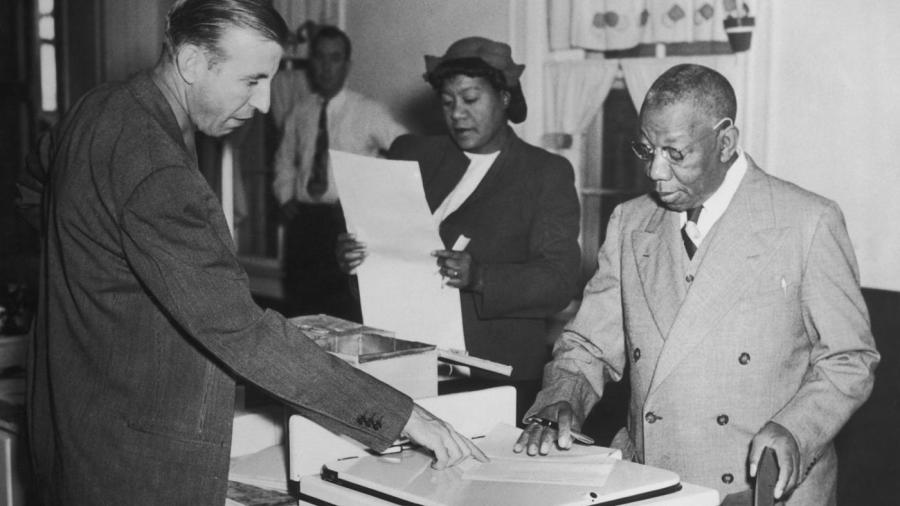When Did Black Americans Get the Right to Vote

Although history shows the 15th Amendment to the Constitution in 1870 did give blacks the right to vote, it was not until 1966 that all barriers were removed allowing them to vote freely.
Reconstruction and the 15th Amendment After the Civil War ended in 1865, slavery was abolished and moves were made to treat all citizens equally under law. Because President Andrew Johnson believed that each state had a right to govern, a number of Southern states were able to introduce legal codes that restricted the freedom of blacks. In response, Congress passed the 14th Amendment to the United States Constitution in 1868 that provided equal protection under law to blacks. In 1870, the 15th Amendment was approved and gave the vote to every male citizen, irrespective of his race or color.
‘Jim Crow’ Laws Although blacks won the right to vote, Southern legislatures hit back by passing so-called “Jim Crow” laws. These segregationist laws were exploited to limit black civil rights and to institutionalize segregation. They were used to disenfranchise blacks and prevent them from voting. Mechanisms included poll taxes that made it impossible for impoverished blacks to vote, unfair literacy tests and grandfather clauses. These laws denied American blacks the right to vote, particularly in the southern states. Although intimidated by violence and threats, Southern black Americans continued to assert their rights and several black legislators and congressmen were elected.
Enacting the 19th Amendment It wasn’t only black people that faced discrimination as women didn’t have the same rights as men. They weren’t allowed to vote, couldn’t own property and weren’t legally entitled to the money they earned. Following the significant role that women played as abolitionists, their support for the 15th Amendment and their campaign for universal suffrage, Congress passed the 19th Amendment in 1919, which gave women the right to vote. This meant all black Americans were, in theory, entitled to vote, despite constraints imposed by segregationist laws and also by the 12 states that did not ratify the amendment.
1957 Civil Rights Act Black Americans continued to face institutionalized discrimination. Following the Second World War, returning black servicemen, who had faced the same risks and dangers as other soldiers, were not prepared to tolerate discrimination and added their voice to the fight for civil rights.
In 1955, a black woman named Rosa Parks was detained for refusing to give her bus seat to a white man in Montgomery, Alabama. This action provoked outrage that led Dr. Martin Luther King Jr. to form the Montgomery Improvement Association. An embargo of the Montgomery bus system ensued that lasted until the Supreme Court ruled that segregated seating was unconstitutional.
The history of continued voter intimidation and other civil right incidents eventually prompted President Dwight D. Eisenhower to coax Congress to pass the Civil Rights Act of 1957. This provided for federal prosecution for anyone preventing others from voting.
Full Voting Rights 1965 In March 1965, a voting rights march was brutally broken up by Alabama state troopers. The incident, captured by television reporters, prompted President Lyndon Johnson to call for legislation on voting rights. He detailed the many ways that were used to deny voting rights to blacks and, in 1965, the Voting Rights Bill was approved. This act banned devious tactics used to limit voting rights. The last remaining legal barrier, poll taxes, was banned by the Supreme Court in 1966. Modern history shows that it took almost 100 years before black Americans achieved full, protected voting rights.





